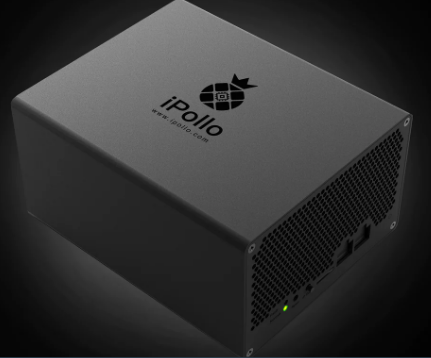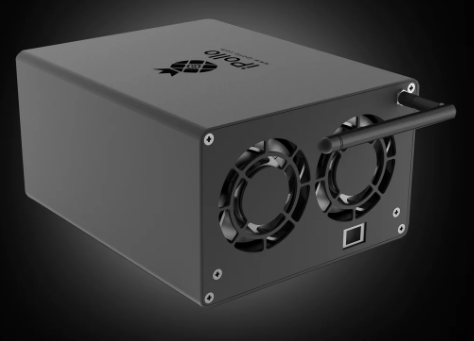iPollo V1 Mini Classic Plus mining cost analysis vs Antminer A3
iPollo V1 Mini Classic Plus Mining Cost Analysis vs. Antminer A3
Cryptocurrency mining continues to evolve, with new hardware solutions emerging to meet the demands of both home miners and large-scale operations. Among these, the iPollo V1 Mini Classic Plus has garnered significant attention for its compact design, efficiency, and accessibility. In this article, we’ll conduct a detailed mining cost analysis of the iPollo V1 Mini Classic Plus compared to the Antminer A3, exploring their respective strengths, operational efficiencies, and cost-effectiveness.
Product Introduction: iPollo V1 Mini Classic Plus vs. Antminer A3
iPollo V1 Mini Classic Plus
The iPollo V1 Mini Classic Plus is a cutting-edge mining device designed specifically for the Ethash algorithm, making it ideal for mining cryptocurrencies such as Ethereum Classic (ETC) and Zilliqa (ZIL). Its standout features include:
- Hashrate: 280 MH/s (±10%)
- Power Consumption: 270W (±10%)
- Memory: 3.75 GB design memory (3.6 GB available for mining)
- Noise Level: 55dB
- Dimensions: 148 x 158 x 78 mm
- Weight: 1 kg
With its compact size, low power consumption, and whisper-quiet operation, the iPollo V1 Mini Classic Plus is particularly suited for home mining environments. It also boasts advanced thermal management, enterprise-grade support, and a modular design for easy maintenance.
Antminer A3
The Antminer A3, released by Bitmain, was one of the first ASIC miners designed for the Blake2B algorithm, primarily used for mining Siacoin (SC). Its key specifications include:
- Hashrate: 815 GH/s
- Power Consumption: 1275W
- Noise Level: 76dB
- Dimensions: 318 x 200 x 136 mm
- Weight: 4.4 kg
While the Antminer A3 was groundbreaking at its launch, its power-hungry nature and algorithm-specific focus limit its versatility in today’s mining landscape. It is better suited for large-scale operations due to its high noise levels and energy demands.

Mining Cost Analysis: Key Factors
To compare the cost-effectiveness of the iPollo V1 Mini Classic Plus and the Antminer A3, we’ll evaluate several critical factors:
- Initial Investment
- Power Consumption and Electricity Costs
- Maintenance and Operational Costs
- Profitability and ROI
- Versatility and Future-Proofing
1. Initial Investment
The iPollo V1 Mini Classic Plus offers a cost-effective entry point into cryptocurrency mining. Its compact design and lower power requirements reduce both the upfront cost and the need for additional infrastructure, such as cooling systems or soundproofing.

In contrast, the Antminer A3’s higher price tag and larger size make it a more significant investment. Additionally, its power demands often necessitate upgrades to electrical systems, further increasing initial costs.
2. Power Consumption and Electricity Costs
Power consumption is a critical factor in mining profitability. The iPollo V1 Mini Classic Plus consumes just 270W, making it one of the most energy-efficient miners on the market. For example, at an electricity rate of $0.10 per kWh, the daily electricity cost would be approximately $0.65.
The Antminer A3, on the other hand, consumes 1275W, resulting in a daily electricity cost of $3.06 under the same conditions. Over time, this difference becomes substantial, especially for miners operating multiple units.
3. Maintenance and Operational Costs
The iPollo V1 Mini Classic Plus is designed with superior maintenance economics in mind. Its modular design ensures that replacement components are readily available and easy to install, minimizing downtime and repair costs. Its advanced cooling system also extends the hardware’s lifespan, reducing long-term operational expenses.
The Antminer A3, while robust, lacks the same level of user-friendly design. Its higher power consumption generates more heat, potentially leading to increased wear and tear. Additionally, its noise levels may require additional soundproofing measures in residential areas.
4. Profitability and ROI
To assess profitability, let’s compare the estimated daily revenue and ROI of both devices based on current market conditions and typical mining rewards:
#### iPollo V1 Mini Classic Plus
- Daily Revenue: ~$1.50 (mining ETC or ZIL)
- Daily Electricity Cost: $0.65
- Daily Profit: $0.85
- ROI: Approximately 12-18 months (depending on initial investment and coin prices)
#### Antminer A3

- Daily Revenue: ~$1.20 (mining SC)
- Daily Electricity Cost: $3.06
- Daily Profit: -$1.86 (loss)
As evident from this comparison, the iPollo V1 Mini Classic Plus offers a clear advantage in terms of profitability. Its lower electricity costs and consistent performance make it a more viable option for miners seeking positive returns.

5. Versatility and Future-Proofing
The iPollo V1 Mini Classic Plus’s focus on the Ethash algorithm provides miners with flexibility, as ETC and ZIL are both established cryptocurrencies with strong market positions. Its compact size and low noise levels also make it adaptable to various mining environments, from home setups to small-scale operations.
The Antminer A3, while powerful, is limited to the Blake2B algorithm, which has seen declining profitability due to increased competition and lower coin prices. This lack of versatility makes it less attractive for miners looking to future-proof their investments.
Practical Applications: Real-World Scenarios
Home Mining
The iPollo V1 Mini Classic Plus is an ideal choice for home miners. Its whisper-quiet operation and low power consumption allow for 24/7 mining without disrupting daily life. Its compact size also makes it easy to integrate into existing spaces, such as home offices or garages.
The Antminer A3, with its high noise levels and power demands, is better suited for dedicated mining facilities rather than residential environments.
Small-Scale Operations
For small-scale mining operations, the iPollo V1 Mini Classic Plus offers scalability and cost-efficiency. Multiple units can be deployed without significantly increasing electricity costs or requiring extensive cooling systems.
The Antminer A3, while capable of high hashrates, becomes less economical in small-scale setups due to its high operational costs.
Conclusion: Which Miner Comes Out Ahead?
When comparing the iPollo V1 Mini Classic Plus and the Antminer A3, the former emerges as the clear winner in terms of cost-effectiveness, versatility, and practicality. Its low power consumption, compact design, and focus on profitable cryptocurrencies make it an excellent choice for both home miners and small-scale operations.
While the Antminer A3 remains a powerful miner, its high operational costs and limited algorithm support make it less viable in today’s competitive mining landscape. For miners seeking a reliable, efficient, and future-proof solution, the iPollo V1 Mini Classic Plus stands out as a superior option.
By carefully considering factors such as initial investment, electricity costs, and long-term profitability, miners can make informed decisions that maximize their returns and ensure sustainable operations. Whether you’re a newcomer or an experienced miner, the iPollo V1 Mini Classic Plus offers a compelling balance of performance and affordability that’s hard to beat.